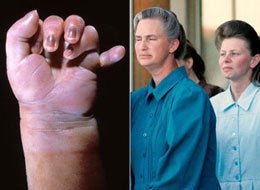
To geneticists, the polygamous Fundamentalist Church of Jesus Christ of Latter Day Saints (FLDS) community, based in West Texas, might look a bit like an eddy in the river of gene flow.
Within this sect, for generations, a small number of families have married and remarried, their genes becoming subtly more similar with each passing decade.
Now, state officials have begun gathering DNA samples from the more than 400 children taken into state custody, primarily to help tease out the complex family trees within the group and determine whether sexual abuse has taken place.
But through these tests, officials may also get a glimpse of exactly how genetically similar the individuals that make up the group have become -- and why the members of this sect appear to have largely sidestepped the archetypical deformities that come part and parcel with close inbreeding.
Martha Bradley is a sociologist at the University of Utah in Salt Lake City and author of the book "Kidnapped From That Land," which documents the government's 1953 raid on a polygamous fundamentalist community in Short Creek, Ariz. She is also an expert on the FLDS, having studied the group in the early 1990s, and she believes it is likely that some degree of inbreeding has already occurred within the sect.
"I wouldn't be surprised if there were [inbreeding]," Bradley says. "It's such a small pool of members, and it has been since the '20s."
Yet, in a community roster that contains hundreds of names -- but remarkably few different surnames -- some wonder why the more obvious physical defects associated with inbreeding, such as cleft palate and encephalopathy, have not yet manifested themselves in the appearance of the sect members.
The answer -- give it many more generations. So says Jonathan Turner, a professor of sociology at the University of California, Riverside.